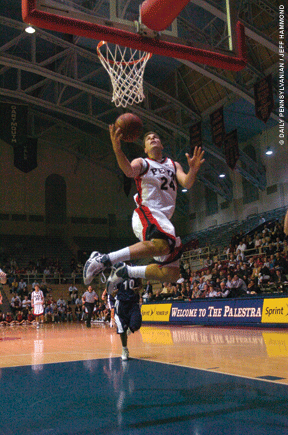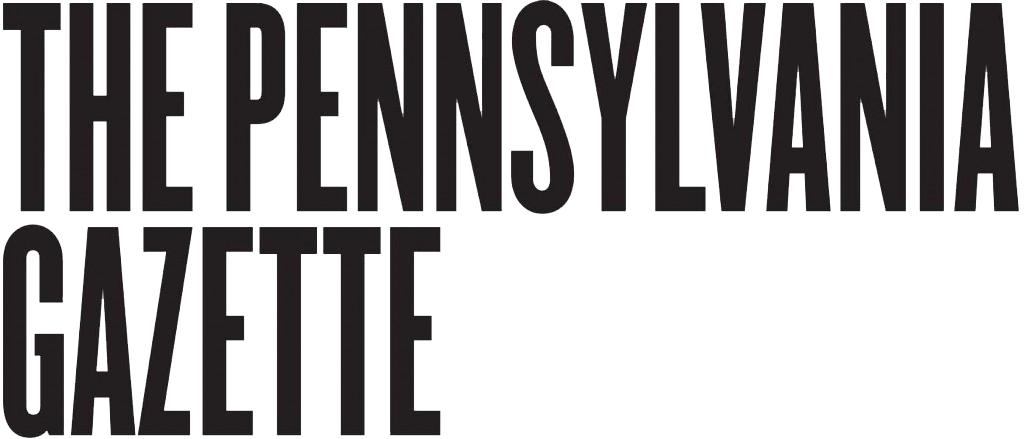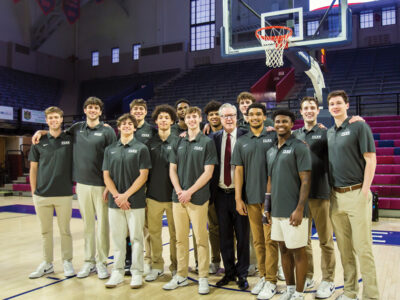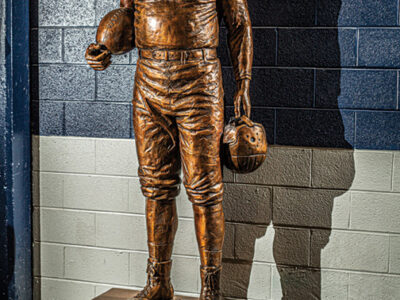
By David Porter | The Penn basketball program currently finds itself in that nebulous period that always follows a change at the top. It has been a while—17 years, to be exact—since the Red and Blue Nation has had a new coach to scrutinize and dissect, and even longer since they’ve had to chew on the departure of one who was as successful as the sainted Fran Dunphy.
Glen Miller has made sure to remind anyone who will listen that he is not Fran Dunphy and he is not trying to be Fran Dunphy. That said, he could do worse than emulate Dunphy’s success: 10 Ivy titles, five undefeated Ivy seasons and a .798 winning percentage in the league. For now, he is getting used to a different type of pressure than he faced in seven years at Brown.
“At Brown we had alumni who were interested in basketball, but not this many,” Miller said before a recent game. “There’s also the heightened level of expectation, but that’s the reason I came here to coach.”
While the first one-third of a season is barely enough time for a new coach to memorize everyone’s name, much less put a definitive imprint on a program, it has provided enough of a sample to draw some conclusions about this year’s team:
The Quakers don’t figure to have any trouble scoring points. Through nine games, they averaged 76 points, or more than 10 points per game more than the 2004-2005 and 2005-2006 teams averaged at the same juncture. A pessimist would point out that non-conference cupcakes Florida Gulf Coast and Navy aren’t exactly the Dukes and North Carolinas of the world; an optimist would reply that the earlier Quaker teams had their laughers, too, and also went on to go a combined 25-3 and win undisputed Ivy League titles. Besides, Penn gets its shot at North Carolina on January 3 in Chapel Hill.
The concept of sharing the ball seems to have spread up and down the roster. The Quakers averaged nearly 20 assists per game through the first nine games, an astonishing total when it is considered that many college teams finish games with half that many. Against Monmouth, they had 26 assists on 34 field goals, led by Ibrahim Jaaber’s career-high 10. The slithery senior is the chief distributor, but others get in on the act, too: While Jaaber averages 5.5 assists per game, the other three returning starters combine to average nine.
“That’s a big statement of where we are in terms of unselfishness,” Miller said.
Speaking of Jaaber, the reigning Ivy League Player of the Year seems to reinvent himself each season as he unveils new facets to his game. He arrived at Penn as a defensive disruptor and developed into a reliable shooter and ball handler at the collegiate level. This season he seems more content to work within the flow of the game, surrounded as he is by other players who can also put the ball in the basket when asked. Against Monmouth, he shot 1-for-7 and finished with five points, but with the aforementioned 10 assists, five rebounds and six steals had no less effect than if he’d scored 20 points.
Don’t you just wish you could get the names of the recruiters who passed over senior Mark Zoller four years ago? The scouting report probably went something like this: “Too small to play power forward … Too slow to play small forward.” (By the way, that precise assessment was aped by Dunphy two years ago as he marveled at Zoller’s progress in his first two seasons.) Zoller holds the distinction of raising his scoring average in each year at Penn, and looks primed to make it a clean sweep: Through nine games he was scoring 21 points per game and had set one career high (29 points against Monmouth), then surpassed it four days later (33 against Villanova). If you’re wondering who the last Penn player was to average more than 20 points for an entire season, it was Keven McDonald C’78 way, way back in 1977-78.
“He’s doing it all,” Miller said. “We’re moving him around to all areas of the floor, but credit him; he’s a gamer.”
Miller’s first taste of the Big Five came in a 99-89 loss to Villanova on December 2 in a game in which Penn shot 58 percent from the field, got 33 points from Zoller, and still managed to fall to the Wildcats in front of a near-sellout crowd of 8,458.
“Our preparation for the game was the same, but the difference was the intensity,” Miller said. “It was great playing in the Palestra in front of that crowd, although you can get 2,500 people in there and it will still be loud.”
The Palestra will be the site on January 24 for what promises to be a memorable evening in Philadelphia basketball when Dunphy brings his Temple team to face the Quakers. More important, it will give Miller a chance to step out from behind the lengthy shadow of his predecessor and begin forming one of his own.
Whether or not you believe that the football gods were evening up the score for all the Quakers’ last-second victories over the years, the way the 2006 season ended was still hard to fathom. If nothing else, it reinforced the importance of a reliable kicking game and should chasten any Quaker fans who overlooked the contributions of players like Jason Feinberg C’01 and Peter Veldman C’04 M’08 to past teams’ successes.
Without belaboring the particulars, the four losses by a total of eight points to end the season highlighted the glaring deficiency in the Quakers’ special teams, notably in the 31-30 overtime loss to Princeton that turned on a botched extra point. By that point, junior wide receiver Braden Lepisto had been pressed into service after holdover Derek Zoch, also a junior, who kicked 11 field goals in 2005 and led the Quakers in scoring, struggled early in the season and never regained his touch.
“None of us saw that coming with Derek,” coach Al Bagnoli said, “and once he lost confidence it was hard to get back on track.”
The defeats overshadowed the emergence of sophomore Robert Irvin as the quarterback of the present and future and the overall excellence of running back Joe Sandberg, who was one of three Quakers to be named first-team All-Ivy along with fellow seniors tight end Chris Mizell and offensive lineman Sean Estrada. Sandberg finished the season with 1,042 yards and 13 touchdowns and became the eighth player in program history to run for more than 1,000 yards. The silver lining in what has to be viewed as a season best forgotten is that Sandberg is likely to get a fifth year of eligibility next season from the Ivy League. “We don’t anticipate any problems,” Bagnoli said.
David Porter C’82 writes for the Associated Press.




